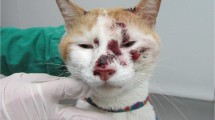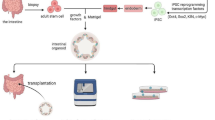Abstract
Young (less than 8 weeks old) immunocompetent BALB/c mice became infected with Blastocystis hominis after inoculation of fecal cysts orally and of in vitro axenic-culture forms intracecally. This study confirmed that the fecal cyst was the form responsible for external transmission and that the mode of transmission was by the fecal-oral route. The infection was self-limiting and the infected BALB/c mice appeared normal except that some of them showed weight loss and lethargy. Both vacuolar and granular forms were found in the cecum, but only cyst forms were observed in the colon. Histological examination of the cecum and colon showed intense inflammatory-cell infiltration, edematous lamina propria, and mucosal sloughing. It is apparent that although B. hominis is not invasive, it is capable of causing pathogenesis in BALB/c mice.
Similar content being viewed by others
Author information
Authors and Affiliations
Additional information
Received: 10 June 1996 / Accepted: 14 August 1996
Rights and permissions
About this article
Cite this article
Moe, K., Singh, M., Howe, J. et al. Experimental Blastocystis hominis infection in laboratory mice. Parasitol Res 83, 319–325 (1997). https://doi.org/10.1007/s004360050256
Issue Date:
DOI: https://doi.org/10.1007/s004360050256




